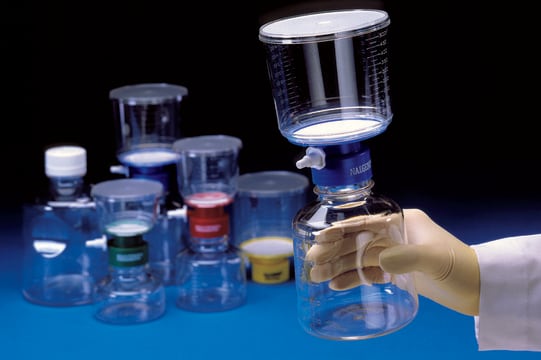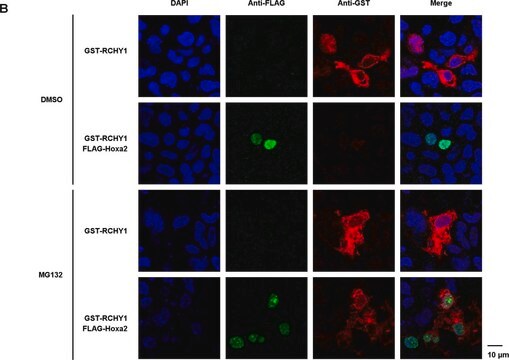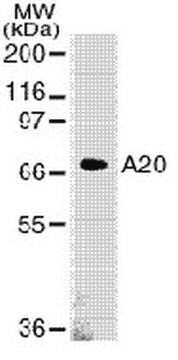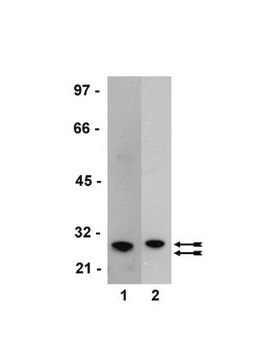AB3282
Anti-Glutathione-S-Transferase Antibody, S. japonicum form
Chemicon®, from rabbit
Synonym(e):
GST-tag
About This Item
Empfohlene Produkte
Biologische Quelle
rabbit
Qualitätsniveau
Antikörperform
purified antibody
Antikörper-Produkttyp
primary antibodies
Klon
polyclonal
Speziesreaktivität
Schistosoma japonicum, vertebrates
Hersteller/Markenname
Chemicon®
Methode(n)
ELISA: suitable
western blot: suitable
NCBI-Hinterlegungsnummer
UniProt-Hinterlegungsnummer
Versandbedingung
wet ice
Posttranslationale Modifikation Target
unmodified
Angaben zum Gen
human ... GSTP1(2950)
Spezifität
The anti GST antibody reacts specifically with the glutathione S-transferase moiety of GST fusion proteins as expressed in E.coli by the pGEX (1) vectors and in yeast by the pYEX(TM) vectors (2).
(1)The pGEX expression vector system is a plasmid and purification system which, in most cases, results in the fusion protein being soluble in aqueous solutions for extraction and purification from crude bacterial lysates. This expression vector system enables the protein glutathione S-transferase (GST) to be produced in fusion with the protein of interest so as to bind with high affinity to a glutathione affinity column. The GST-protein complex can then be easily purified by elution from the column with reduced glutathione. The pGEX vectors are available as the GST System from Pharmacia Biotech.
(2) pYEX is a yeast GST expression vector supplied by AMRAD biotech of Australia.
Immunogen
Anwendung
Epitop-Tags & allgemeine Anwendung
Epitop-Tags
Physikalische Form
Lagerung und Haltbarkeit
Rechtliche Hinweise
Haftungsausschluss
Sie haben nicht das passende Produkt gefunden?
Probieren Sie unser Produkt-Auswahlhilfe. aus.
Lagerklassenschlüssel
12 - Non Combustible Liquids
WGK
WGK 2
Flammpunkt (°F)
Not applicable
Flammpunkt (°C)
Not applicable
Analysenzertifikate (COA)
Suchen Sie nach Analysenzertifikate (COA), indem Sie die Lot-/Chargennummer des Produkts eingeben. Lot- und Chargennummern sind auf dem Produktetikett hinter den Wörtern ‘Lot’ oder ‘Batch’ (Lot oder Charge) zu finden.
Besitzen Sie dieses Produkt bereits?
In der Dokumentenbibliothek finden Sie die Dokumentation zu den Produkten, die Sie kürzlich erworben haben.
Unser Team von Wissenschaftlern verfügt über Erfahrung in allen Forschungsbereichen einschließlich Life Science, Materialwissenschaften, chemischer Synthese, Chromatographie, Analytik und vielen mehr..
Setzen Sie sich mit dem technischen Dienst in Verbindung.








